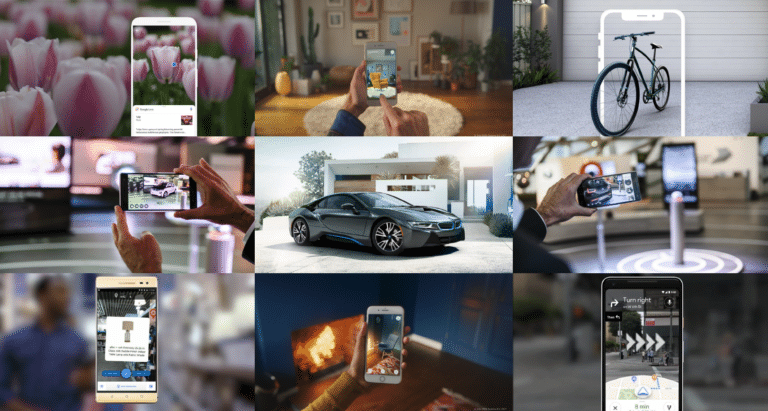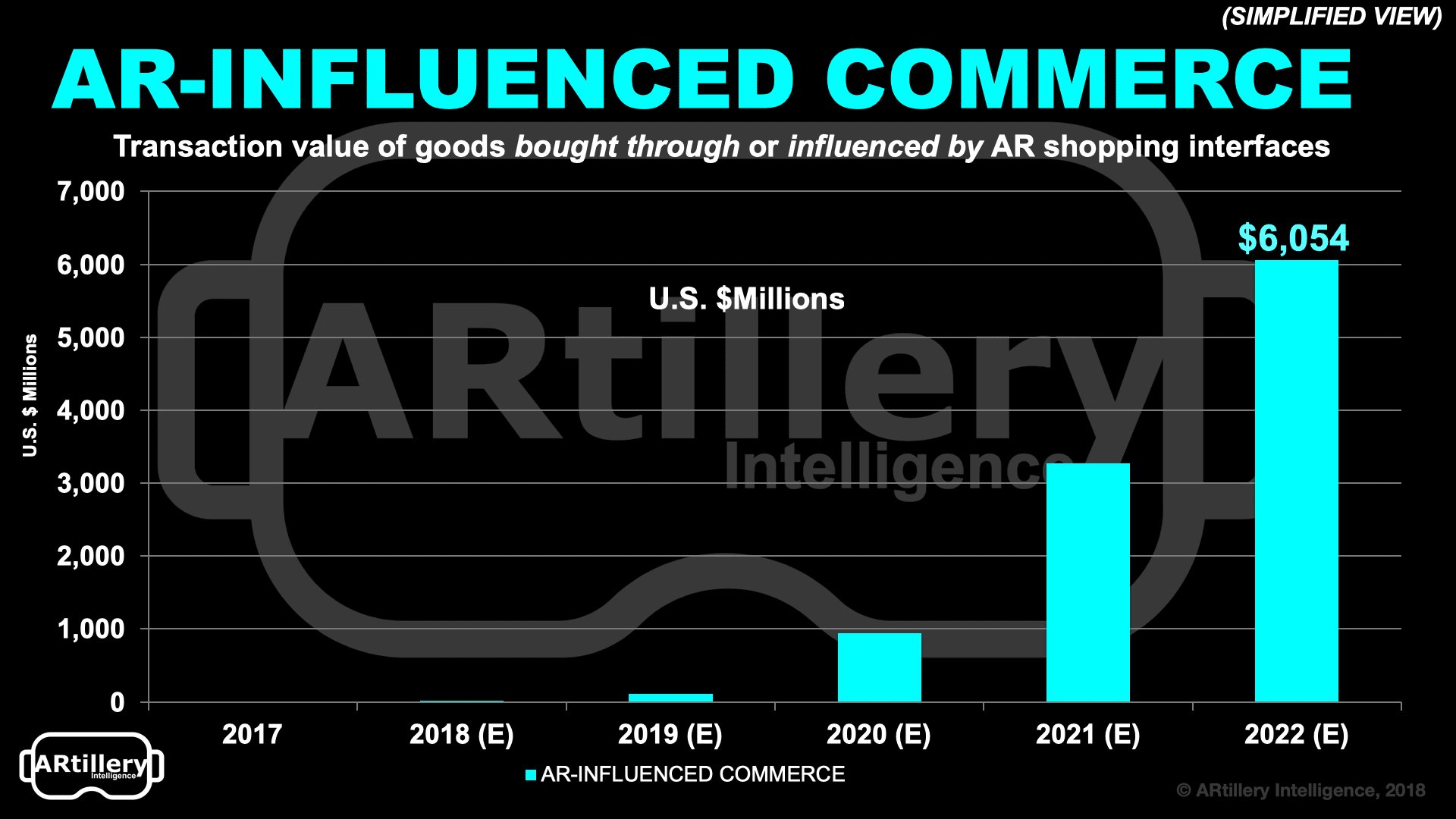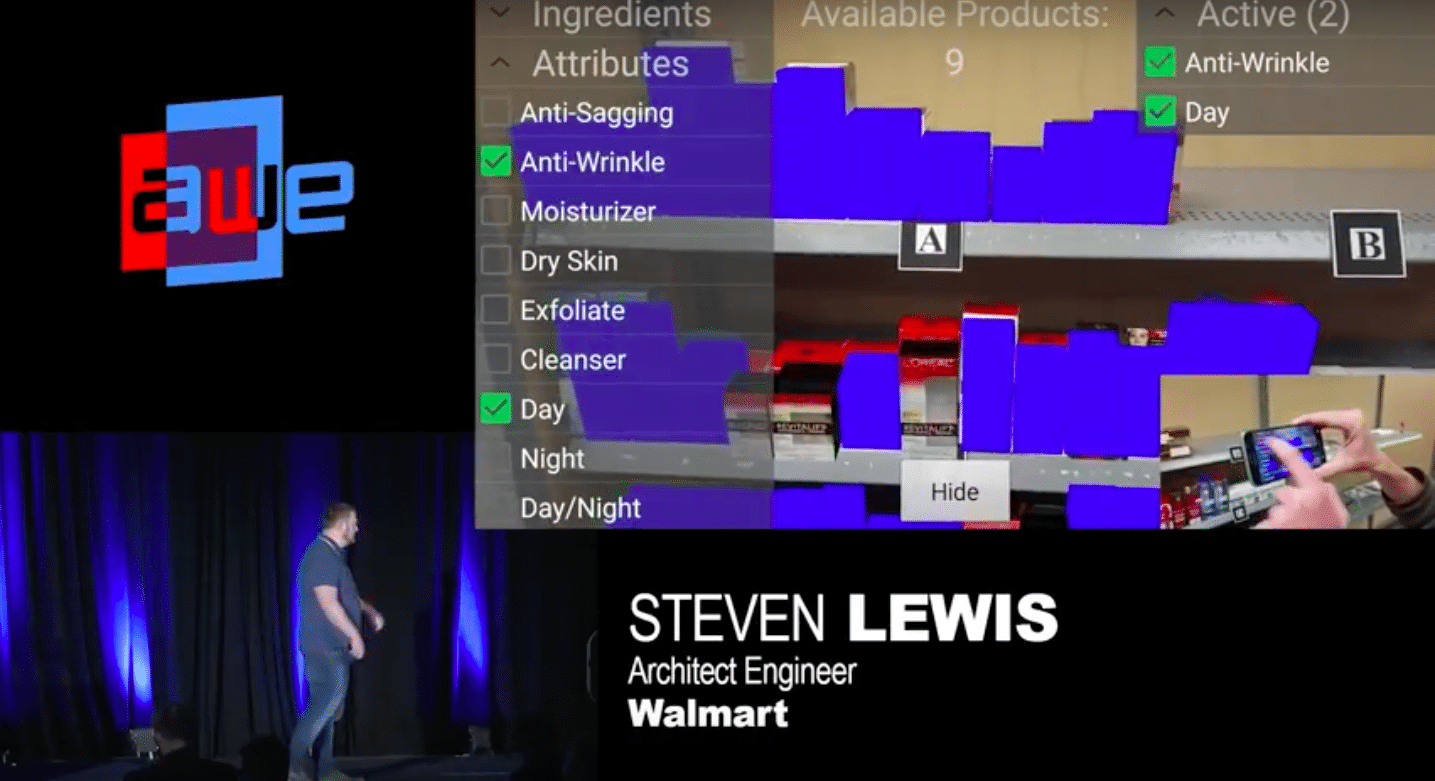
This post is adapted from ARtillery Intelligence’s latest report, AR Commerce: Monetization Comes Into View. It includes some of its data and takeaways. More can be previewed here and subscribe for the full report.
Many questions surround the sometimes-overhyped AR sector. The biggest is how it will make money. There are several answers to that question including enterprise productivity, AR advertising, gaming (e.g. in-app purchases) and others we’ve examined in past reports.
But the area of AR monetization that’s perhaps most logical – and already underway – is commerce. This is the segment of AR in which graphical overlays inform consumers while shopping. It provides contextual product information to inform and incentivize purchases.
This will represent an impactful technology for consumer spending. ARtillery Intelligence projects that $6.1 billion in annual transaction value will flow through AR interfaces by 2022. This means AR will be used somewhere in the consumer shopping journey for that volume of transactions.
Picking up where we left off last week, we’ll dive deeper on visual search — just one form of AR shopping — particularly its use in retail environments. That includes a look at what two exemplars, Walmart and Google, are doing so far to advance AR for retail shopping in physical stores.

Walmart Fuses Clicks and Bricks
Walmart’s AR ambitions so far include an AR prototype app to assist in-aisle shopping. When pointed at a shelf of cosmetic products — a sku-intensive category — it filters attributes like price and color, just like with e-commerce. It then highlights items that match the filter criteria.
“When I say ‘physical to digital’ I mean it literally: smash them together, “said Walmart’s Steven Lewis when demoing the app at AWE in June. “You choose filter criteria and it narrows down and filters out what you don’t want to see. That’s kind of like an e-commerce experience.”
Since Lewis’ AWE comments, Walmart launched AR Scanner, an app feature that lets users point their phone at products in store aisles. Closer to the definition of visual search than the above prototype, it dynamically invokes informational overlays like product details, pricing and reviews.
Beyond the benefits to users — which indirectly drive repeat business and other economics for retailers — there are direct retailer benefits. For example, the AR in-aisle engagement uncovers shopping data that informs everything from inventory management to optimal store layouts.
“There are lots of analytics you can get as a retailer or brand when you actually have someone with a mobile device, or headset in the future, looking at your products,” said Lewis. “Retailers today try to guess your dwell time… there could be a lot of [AR] analytics that would be helpful.”

Google’s VPS: GPS For Indoors
Similar to Walmart’s ambitions to provide in-store shopping utility, Google is motivated to do something similar. Its visual positioning service (VPS) continues to develop. Think of it as a combination of Google Maps and Street View, but for indoor locations.
Working with partners such as Lowes, VPS will help shoppers navigate to and obtain information for products. Using point-cloud based 3D mapping data that it works with partners to collect, it forms the foundation for an indoor mapping utility – solving a common pain point in large stores.
“GPS can get you to the door, and then VPS can get you to the exact item that you’re looking for,” said Google’s VR/AR lead Clay Bavor VPS’ 2017 unveiling at Google I/O. “Imagine in the future your phone could just take you to that exact screwdriver and point it out to you on the shelf.”
Here, Google has self-interested reasons to pursue retail AR. VPS aligns with its core search ad business with “last-mile” attribution data to report to advertisers. And it knows the best way to do that is to track dollars where they’re spent which is predominantly offline in physical stores.
Furthermore, commercial “intent” – a key factor for Google’s search performance metrics – is high when you’re in a physical store. That, plus VPS’ ad-attribution capabilities, makes retail stores a long-coveted “holy grail” for Google. So it will continue to invest heavily to make VPS happen.

Don’t Fight It
AR in retail will be the latest evolution in showrooming — using the mobile device’s connectivity and portability to inform in-store purchases (or order online). And just like showrooming over the past decade, the losers in retail’s next era will be those that try to fight it.
We’re currently seeing lots of examples of this “adapt or die” principle with retailers embracing digital disruption. There’s a growing divergence in the retail sector where digital converts are thriving and exceeding quarterly revenue targets, while non-adaptive companies are dying.
The former include companies like Target and Walmart that are innovating with in-store digital shopping tools, mobile payments and order/pick-up features. The latter include companies like Toys ‘R Us and Sears that failed to embrace mobile tech and millennial proclivities.
The next step in that trend will be AR and other flavors of in-store digitization — like our longstanding prediction for in-aisle payments that’s materializing with Amazon Go and others. Retailers will have to keep up if they’d like to control their own destinies. If not, someone else will.
Put another way, Amazon is reconciling e-commerce disadvantages with things like AR product visualization. So retailers that fail to likewise close the gap on the disadvantages of in-store shopping — with things like in-aisle AR — will lose the battle for shopping’s next era.
See more details about this report or continue reading here.
For deeper XR data and intelligence, join ARtillery PRO and subscribe to the free AR Insider Weekly newsletter.
Disclosure: AR Insider has no financial stake in the companies mentioned in this post, nor received payment for its production. Disclosure and ethics policy can be seen here.
